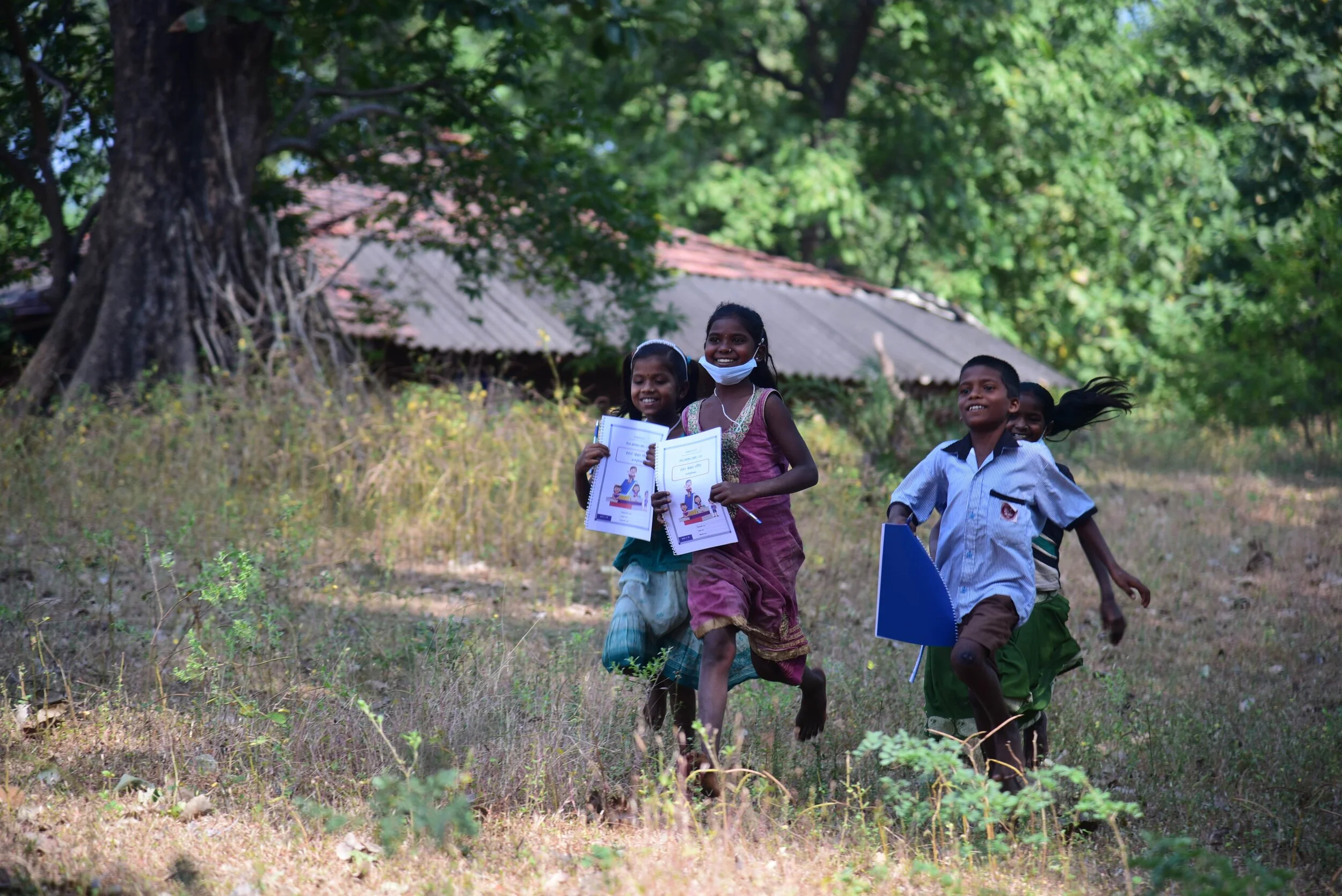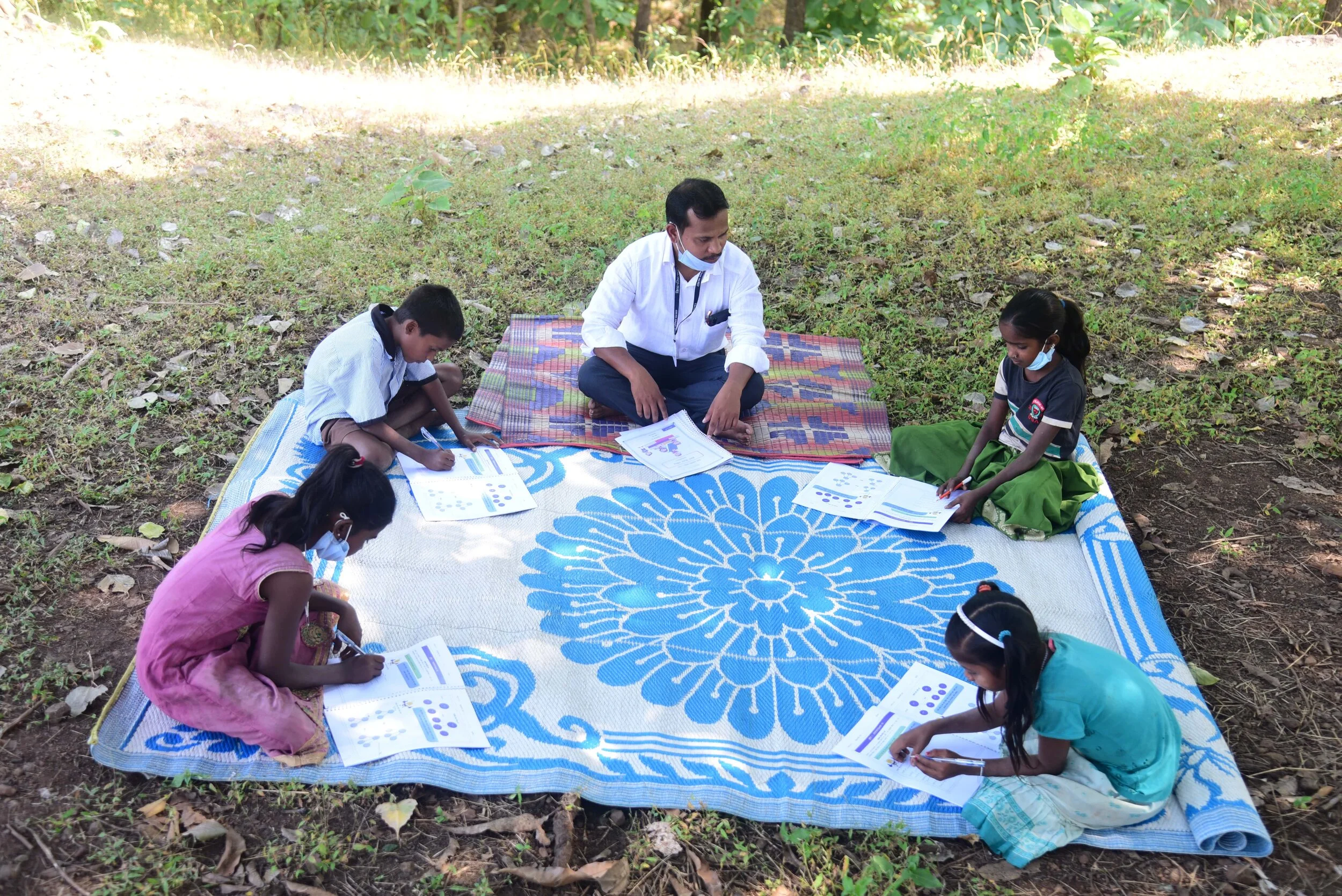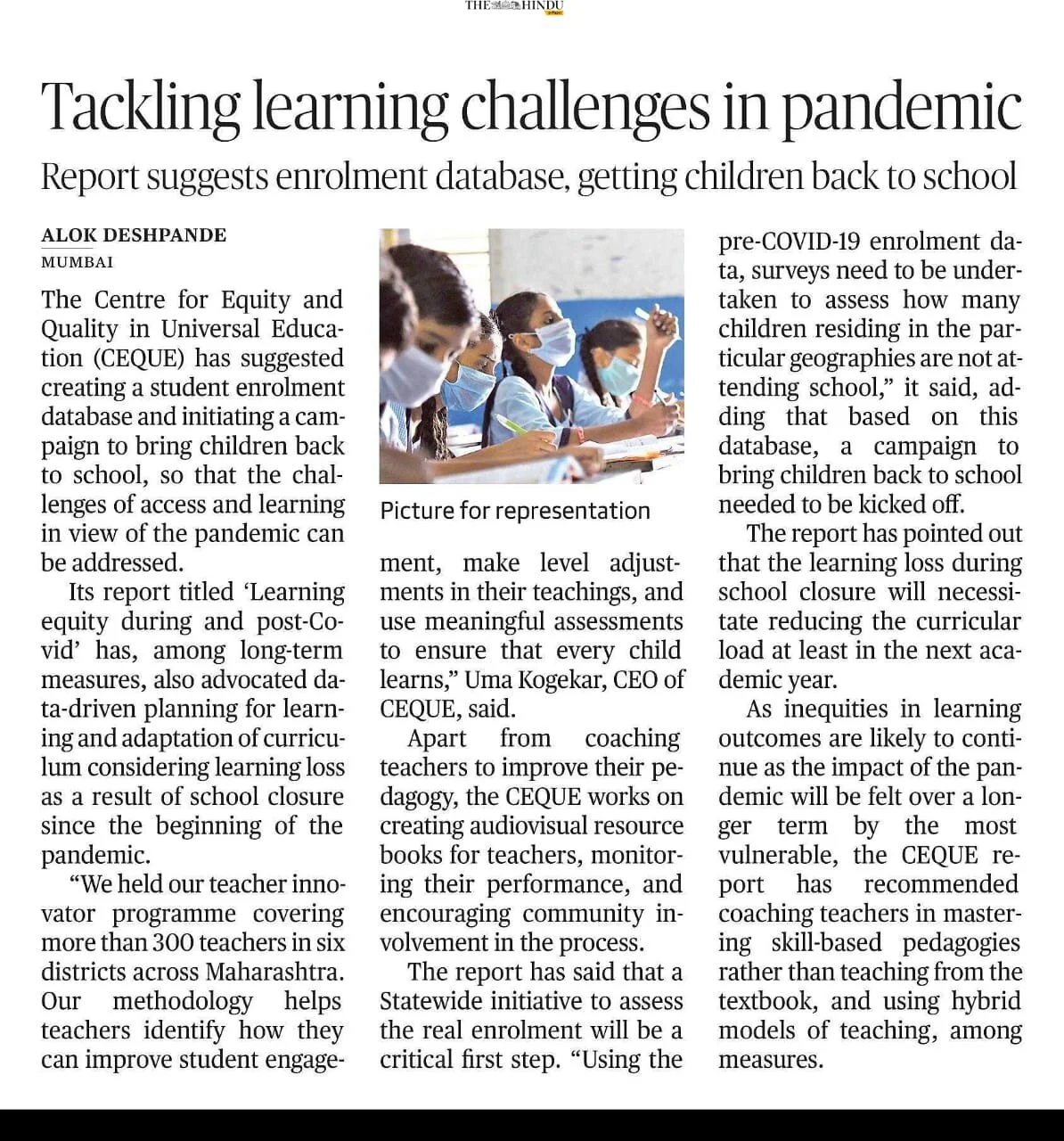Our COVID Response

35% students attended class at the start of COVID. Today 91% are in the fold of learning.
The pandemic created unique challenges for both the teacher and students. With low or limited access to devices or network, a vast majority of children found themselves cast out of the learning fold. Working side by side with teachers, we doubled our efforts to reach the unreached.
Our COVID response was driven by a ground-up understanding of the challenges at their potential solutions. Teachers, district officials, parents and community members came together to support their children’s learning.
How did it happen? Here’s our story.
Identifying the Challenge
Teachers are the foot soldiers who comprehend the ground realities of their student communities like no other in the education system. We engaged with the 300+ teachers in our program from six districts. We asked them about the challenges their students faced and how we could find possible solutions to support them.
At the start of the pandemic, teachers told us that they were able to regularly reach approximately 1/3rd of their students. With the rest, they had either sporadic or no contact because students either lacked connectivity or devices, or their families did not have the financial resources to recharge their devices.
How to reach the remaining 2/3rd of the students seemed like an uphill task. But one thing was clear: We needed a fresh pathway to reach the unreached.
Finding Solutions that Worked
1. Creating Low-Tech Resources and Workbooks
Teachers suggested that low tech resources and workbooks would go a long way in helping them engage with students on the other side of the digital divide. Collaboratively, we created 160 audio-visual resources that required low bandwidth. In addition, we created workbooks in Math and Language. These resources were aligned to the students’ textbooks at the specific grade levels.
The audio visual resources were made available to students on YouTube. However, the workbook distribution, particularly during the lockdown, was a huge logistical exercise. Interestingly, the teachers took to innovative means to distribute the workbooks to students, with the support of CEQUE’s staff. Some distributed them to parents at ration shops or when they came to collect food grains at school. Others took the help of galli mitras or went themselves went door to door themselves. Still others figured convenient locations where they could meet parents to hand over the books.
2. Integrating New Resources in Teaching
Once the resources were in students’ hands, teachers integrated them in their teaching. Children who could join online regularly continued to do so. But teachers now had more flexibility to engage with students who faced connectivity challenges. With them, teachers were able to assign tasks on Whatsapp or through phone calls. Students were expected to complete their workbook assignments and submit their work to their teachers. Teachers then followed up with them, clearing doubts where necessary and provided feedback. Parents and community members played an invaluable role in this effort. Teachers convinced parents that they needed to ensure their children completed and submitted their work. At times, when children needed support and teachers were not able to reach them, teachers organized community members to teach them. At others, where teachers were able to, they formed small groups and taught them at community-based locations organized by villagers.
Close Monitoring and Assessment
The teachers were encouraged to maintain a record of their reach to the previously unreached children. They maintained a record of their contact with these children, as well as the children’s learning through assignments submitted by them. CEQUE continues to support them in collating the data, helping them understand the gaps and coaching them to finding solutions that make sense of ground. The District Education Department, the District Institute of Education and Training and local block officials appreciated the initiative that has helped bridge the gap. “We believe that the teachers have a new motivation now to teach using these workbooks. Students too are very excited.”, said Mr. Bharat Pawar, DIET Principal, Thane.
How can we address the challenges of access and learning during and post covid?
Read the recommendations in the Learning Equity Report.
Read what the Hindu has to say about the report.





